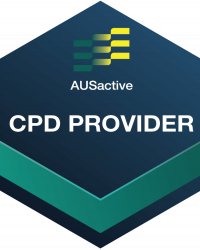Reformer Repertoire
Foot Work: Parallel Heels -
Single
Alternate Names
N/A
Derived From
Classical Reformer: Footwork III Heels
Primary Element
Stability
Why for Primary?
The Foot Work Singles series continues to warm up and prepare the body for what is to come by further developing pelvis stability and continuing to use the larger muscle groups of the legs, in particular connecting into the posterior chain by pressing through the heel of the Foot Bar foot.
Can the legs move independently of the pelvis? Keeping the pelvis still and moving the Foot Bar leg is the aim here, creating and testing the stability of the pelvis and avoiding hitching the hip of the table top leg.
In addition it relates to reflexology as the sole of the foot positioning links to specific organs of the body (Clain Pilates, 2002).
Secondary Element
Strength
Why for Secondary?
To strengthen hip extensor muscles (gluteals and hamstrings) and knee extensor muscles (quadriceps) and to help align the ankle, knee and hip joints.
Tertiary Element
Mobility
Why Tertiary?
The hip, knee and ankle joints are all working here, although not always through their full range of motion.
Repetitions
8-10 each side
Apparatus Setup
Suggested springs
- Number system: 2 springs
- Colour system: 2 x red springs
- Resistance: medium
Headrest position flat unless any neck issues or the client feels more supported with the head lifted using the headrest or a slightly deflated Pilates ball or cushion.
Foot bar one position is set at one position down from vertical, or on many Reformers the top angled position.
Plane of Motion
Sagittal
Targeted Muscles
To connect with, activate and develop the pelvis stabilisation muscles the focus is on gluteus medius and gluteus maximus and the deep abdominal muscles transversus abdominis.
To work on strengthening the leg muscles the focus is on the below muscle groups:
The ‘knee extensors’ or quadriceps muscle group of the anterior thigh facilitate the pressing away from the Foot Bar creating a concentric contraction. They comprise:
- Rectus femoris
- Vastus intermedialis
- Vastus medialis
- Vastus lateralis
The ‘hip extensors’ or hamstring muscle group of the posterior thigh facilitate and control the return phase of the movement creating a concentric contraction. They comprise:
- Biceps femoris
- Semitendinosus
- Semimembranosus
Warnings
Not suitable for some hip, knee and ankle pathologies, or if the client is unable to work in a pain free range of motion during the exercise.
If the client has tight or sore hip flexor muscles, a Magic Circle, Pilates Ring or looped resistance band could be placed around the foot of the table top leg with the other end held by the hands to help support the weight of the table top leg, taking the pressure off the hip flexor muscles.
Execution
Lie supine on the Reformer in a neutral pelvis position with the heel of each foot on the foot bar in line with the ASIS (hip bones), feet flexed. Arms positioned beside the body with the shoulders squared against the shoulder blocks. Lift one leg to a tabletop position.
Exhale to straighten the Foot Bar leg, extending the hip and knee while maintaining a neutral pelvis position, avoiding hitching the hip of the table top leg. Inhale to bend the leg returning towards the stopper or park.
Observations
Do a body scan of the client taking note of the following points
- Pelvis
- Are the hip bones even horizontally or is the client hitching, leaning towards or biasing the table top leg side?
- Can the client move the carriage in and out without the pelvis moving?
- Legs
- Is the table top leg staying at 90 degrees, or if the thigh bone leaning away from the torso, indicating a lack of control of the pelvis. Try and cue flattening down the low spine onto the carriage, or bringing the knee in towards the chest.
- If the client has tight or sore hip flexor muscles, a Magic Circle, Pilates Ring or looped resistance band could be placed around the foot of the table top leg with the other end held by the hands to help support the weight of the table top leg, taking the pressure off the hip flexor muscles.
- Feet
- Is the Foot Bar foot lifting or leaning outward? (supinated)
- Is the Foot Bar foot rolling inward? (pronated)
- Apparatus
- Is there tension on the springs the whole time? Or is the carriage crashing to the stopper or ‘park’ indicating a lack of control and a push by the client beyond their ideal range of motion? If the carriage is crashing encourage the client to reduce their range of motion and slow their movement down to focus on controlling the return phase, or reduce the spring load so the client can control the springs.
Learning Style Technique Cues
Auditory – word associations that connect mind and body
- Extend the Foot Bar leg from the knee and hip, pressing the heel down towards the floor to assist in hamstring engagement
- Say the client’s name when you’re about to interact with them
Visual
- Imagine a pole or broomstick across the hip bones – maintain the pole at horizontal and try not to hitch the hip of the tabletop leg
- Imagine that both legs are on the Foot Bar and you’re pushing away. Everything remains the same keeping the structure stable and balanced
- You may demonstrate a part of the movement as a visual representation for the client to see
Kinaesthetic
- Slide a hand under the low back to ensure neutral pelvis is maintained, particularly when returning towards the stopper or park
- Feel the PSIS bones on the back of the pelvis pressing evenly into the carriage
Modifications and Variations
Regress the exercise by
- Reducing the spring setting to one red and one blue spring to connect into the pelvis stability component of the exercise, practice deep core muscle activation, and reduce the leg load
- Reducing repetitions and/or pace
- Reducing the range of motion so the client can focus on pelvis stability without the hip flexors taking over. Create more of a pulse movement from the extended leg position halfway into the stopper to avoid going into deep hip flexion on the return phase
- Working on the Foot Work: Parallel Heels from the fundamental repertoire
Progress the exercise by
- Increasing the spring settings to two red and one blue springs
- Placing a slightly deflated Pilates ball or instability prop under the pelvis to further challenge pelvis stability
- Progressive Repertoire to work towards
Series and Transitions
This exercise is part of the Foot Work Singles series which includes a range of other foot positions in singles, and also doubles in the fundamental repertoire. The Foot Work series can also be found in the Wunda Chair repertoire and the Cadillac repertoire.
Transition to the second Foot Work Singles exercise by lifting the heel of the Foot Bar leg off in one movement, and placing the arch of the foot onto the foot bar ready for Foot Work: Parallel Arches – Single.
Alternatively transition to Foot Work: Parallel Heels – Single for the second side (or leg) by placing the table top leg heel onto the Foot Bar and lifting the Foot Bar leg into table top, switching leg positions.

